Newsletter Signup - Under Article / In Page
"*" indicates required fields
With social media, as with many industries, you have to make sure to stay on top of the game. The phrase ‘if you snooze, you lose’ remains as true as ever. If you don’t jump on the bandwagon now, you might be in for a bad surprise later. We don’t want you to miss out, so here’s what you need to know.
Social media is in the running. Approximately 3.5B people are using it in 2019 and the numbers are rising. On average, people spend 2h 22min on social media every day. This means we can use social media platforms to reach a huge section of our daily audience – whether these are marketers, scientists, or other life science representatives.
What makes social media so important for the life sciences?
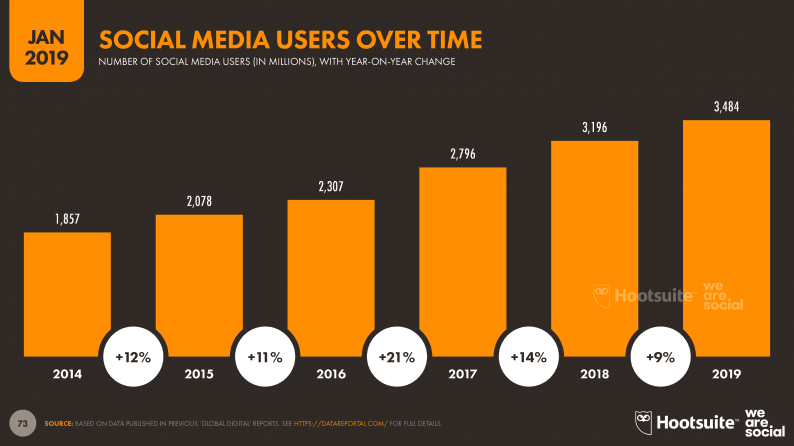
“Social media is important for knowledge sharing and community building,” Labiotech’s community manager, Yi Jen Chang, told me. “In the life sciences, we need open and transparent platforms that everyone can access and where people can talk about science and share their passion for science, irrespective of their educational background. Today, social media is the fastest way to obtain and distribute such information.”
Moreover, social media is important for increasing brand awareness, growing trust in your brand, establishing your brand as the go-to source for information on certain topics, and for staying present in your followers’ minds. It can also help you grow your website traffic, promote content, collect valuable leads, and even boost sales. Moreover, social media can help you change your brand’s profile from being an unattainable entity to being more human, reachable, and trustworthy.
You know it yourself: social media attracts a wide variety of people. You might come across the odd post once in a while, but overall there is quite some useful stuff to be found. The networking characteristic of many platforms is especially helpful when it comes to the life sciences because it helps to start conversations.
Why is social media so important for life science marketers?

Moreover, the report found that a third of internet users apply social media to follow their favorite brands, and 25% followed brands that they were thinking of buying something from. It’s unsurprising therefore that 73% of marketers find social media marketing effective for their business in some way or another.
Of course, the type of social media platform you use matters a great deal for marketing, networking, or distributing information. “You should choose the channel you want to use based on what you want to achieve with your post,” Yi Jen explained. “The nature of each platform is different. LinkedIn, for example, is more business-centered, while Twitter is mainly used for quick news updates. For a greater reach, you can also use multiple social media platforms.”
These platforms are most useful for life sciences social media marketing!
Being visual on different channels can greatly increase our reach and trust, especially in the life sciences. In addition to e-newsletters, three of the main platforms used in the life sciences are Facebook, LinkedIn, and Twitter. These channels can help to build an engaging community including life science representatives, such as biotech professionals, business partners, customers, patients, and researchers. Furthermore, they enable the sharing of innovative ideas, important resources, and knowledge.
LinkedIn: For the business-minded
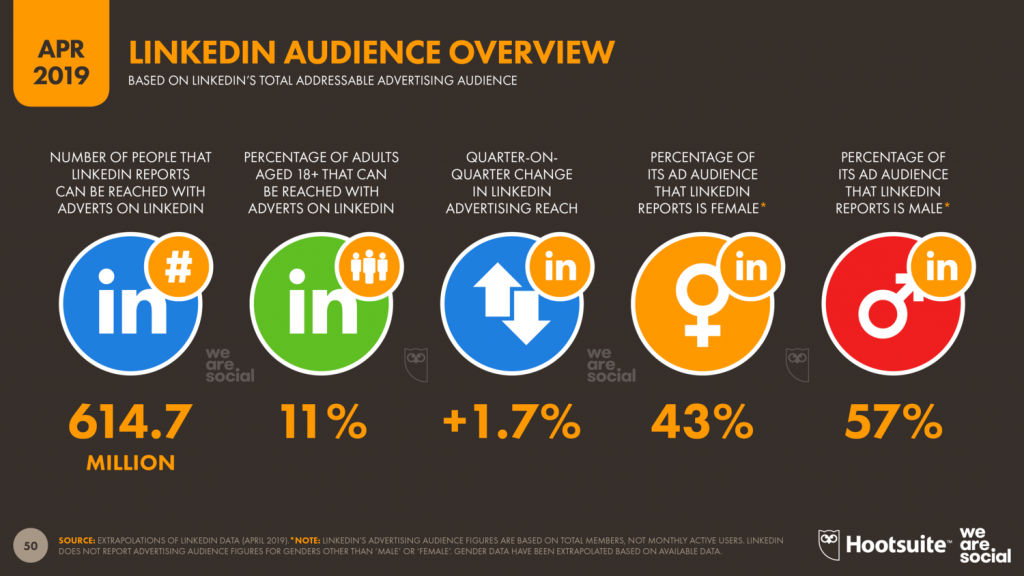
With more than 660M users, LinkedIn has grown fast in recent years. Today, 30M businesses are represented on the platform. It is popular among scientists and marketers alike. A survey conducted by Naturejobs found that 41% of scientists and engineers frequently visit LinkedIn – this number has likely risen, as the data is from 2017 – and their main reason for using the platform was ‘in case they were contacted.’
Among B2B marketers, LinkedIn is the second most used platform after Facebook. Also, the 2018 B2B Buyers Survey Report showed that 52% of buyers thought LinkedIn had the greatest impact on their research process. Many marketers not only see LinkedIn as a great platform for sourcing products and services, but also for reaching targeted audiences. LinkedIn, for instance, seems to have the best visitor-to-lead conversion rate of all social media platforms. With a conversion rate of 2.74%, LinkedIn is the best channel for lead generation.
These numbers show that LinkedIn has great potential to drive social media users to your website or another landing page. As people who visit this channel are already in a ‘business mindset’, business content or processes naturally have a greater impact. It might be worth keeping this in mind when you next update your social media marketing strategy.
Twitter: For the fast consumer
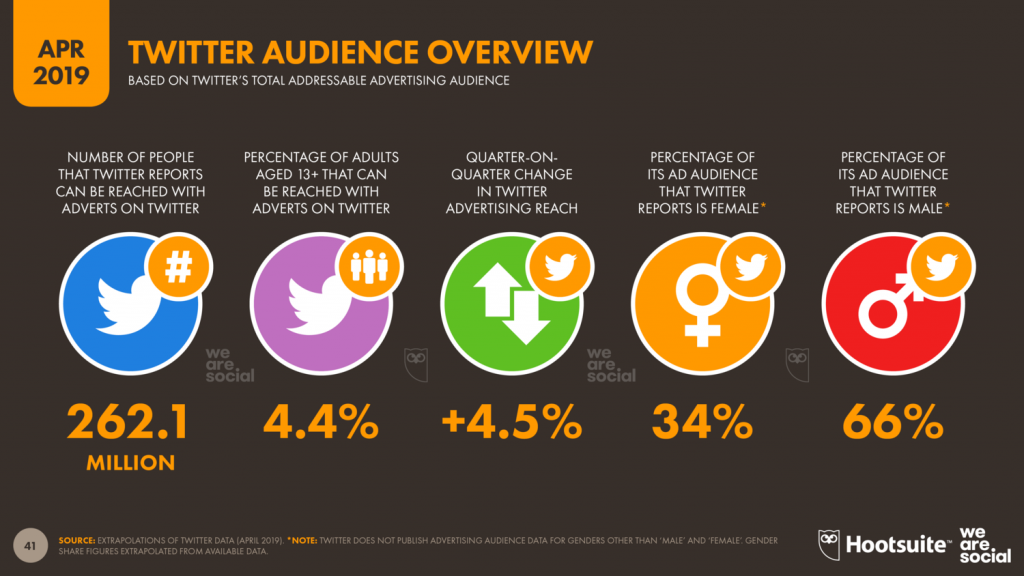
Unlike LinkedIn, Twitter is mainly used for the fast dissemination of information. While users spend an average time of 6.07 minutes per session on LinkedIn, the amount of time spent on Twitter lies at 3.39 minutes. The main reason is the very very short lifetime of tweets, which lies at approximately 15-20 minutes.
“Twitter can easily be used to keep up to date with the latest news,” Yi Jen said. “It’s fast, short, and gives you a summary of current affairs, whether that is a new merger and acquisition or the release of a new drug.”
As one of the leading social media platforms worldwide, Twitter has about 330M monthly active users and 134M daily active users. Whereas scientists mainly use Twitter for posting work-related content and following discussions, marketers are more interested in consumer engagement.
In 2018, 67% of B2B marketers were using Twitter for digital marketing. While the relationship between brands and their customers used to be one-directional, it has now become multi-directional. Consumers can now interact, respond, and react to brands and other consumers as well.
If you are using Twitter, your brand should therefore not only be present but should also interact and engage with its consumers. This helps your customers to build trust towards your brand and makes them more likely to recommend it to others.
Facebook: For the multifaceted
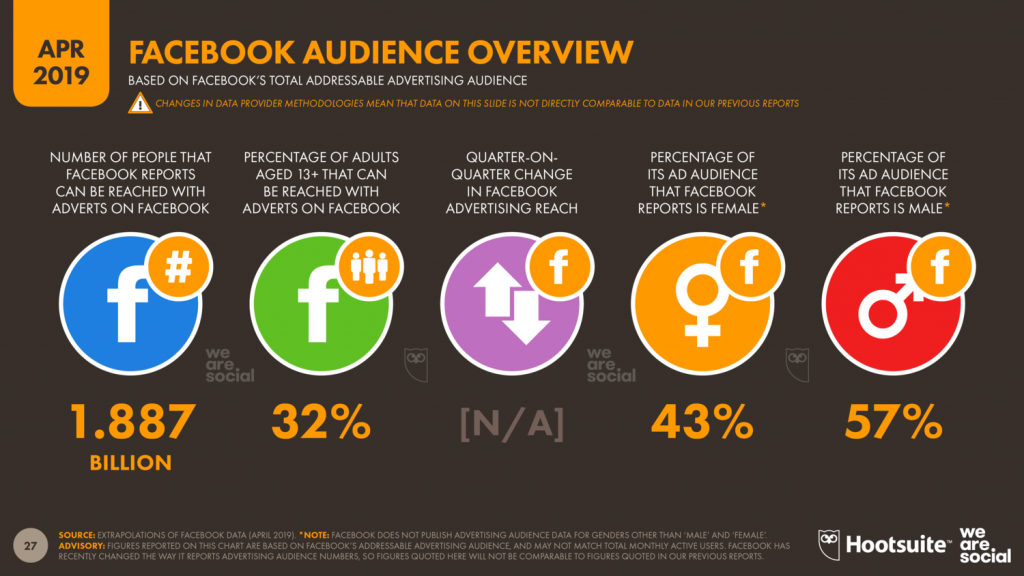
In many ways, Facebook can seem a bit more ambivalent than LinkedIn or Twitter. Although it is the largest social network with over 2B monthly active visitors globally, it is also used in a greater variety of ways. Many people, including scientists, use Facebook for non-professional purposes, for example, as a means of staying in touch with friends.
Nevertheless, 90M small businesses use Facebook and its tools, including messenger, groups, and pages for marketing purposes. In fact, Facebook has reported that 1.8B users can be reached with advertisements on Facebook. But you don’t have to necessarily use paid advertising. Once you have built yourself a following, Facebook posts can also be used to increase traffic to your website or boost engagement with your brand.
Follow these steps and become a social media pro!
Now that we know all about the importance of social media in the life sciences and the different channels you can use, let’s take a look at how to become a social media pro. I have picked Yi Jen’s brain on the most important things to keep in mind when creating social media posts. Here they are:
- Plan a social media content strategy
- Decide what tools to use for social media & when to post
- Consider the user experience
- Track your post’s performance and engagement
Let’s discuss these steps in a little more detail.
1. Plan your social media content strategy

Your social media content strategy should be included in your overall social media strategy and your company’s objectives. Think about how you can use your content to fulfil these objectives. Content is a powerful tool to engage and inspire your audience, increase your brand’s awareness, and provide educational material.
Ask yourself what your brand can offer that others can’t, what your audience needs, and what type of content will resonate with them. Most importantly, don’t turn your social media posts into sales pitches, but rather, use them to build a community. You can even use third-party content if it supports your mission. This will allow your audience to build trust in your brand.
“Always adjust your content to your purpose,” Yi Jen explains. “Ask yourself what you want to achieve, whether that is selling your technology, seeking new partners, sharing your knowledge, or increasing awareness for your brand.”
Once you know what type of content you want to promote, think about how you want to distribute it. Which social media platform do you want to use? What type of format – videos, images, texts, podcasts?
Lastly, plan your social media posts carefully in a calendar or using a planning tool. Content planning is important to keep an overview of your goals and make sure you are meeting them.
2. Decide what tools to use for social media & when to post
![]()
There are different tools to plan and schedule your social media posts. For instance, a simple excel sheet can help gain an overview of the type of content you want to promote, when you want to promote it, and on which social platform.
Once you have planned your content, you need to make sure to schedule it at the right time. For example, according to Hootsuite, the best time to post on Twitter is between 9 a.m. and 4 p.m. on Monday or Thursday; the best times to post on LinkedIn are 7:45 a.m., 10:45 a.m., 12:45 p.m., and 5:45 p.m. on Wednesdays; and the best time to post on Facebook is between 9 a.m. and 2 p.m. on Tuesday, Wednesday, or Thursday.
You can use this knowledge to schedule your most impactful posts in these time windows using some helpful social media scheduling tools. Here are some examples of the tools we have worked with or are working with at Labiotech Reach, but there are many many more:
3. Consider the user experience
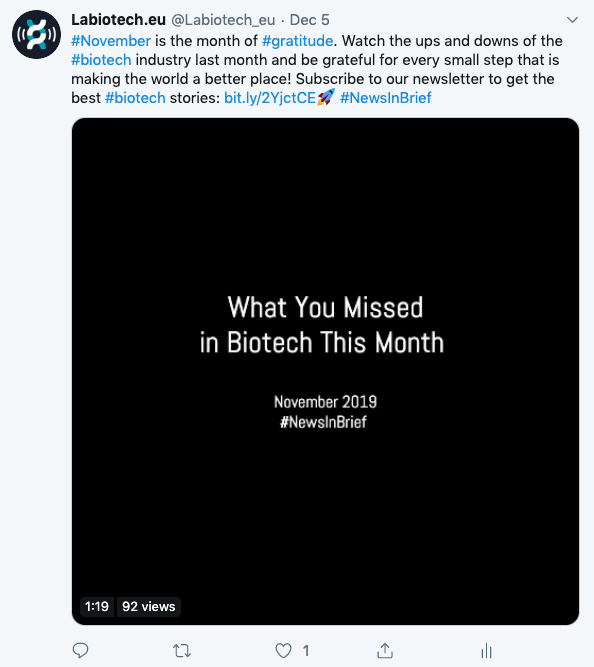
For each post, try to understand your audience and ask yourself who you want to reach. This closely ties in with the purpose and content of your post. Do you want your audience to engage with the post by liking and sharing your content? Or do you want them to click on a link that will redirect them to a landing page you want them to sign up to?
All of this is closely related to the channel, format, and tags you choose. Depending on the nature of the content you want to promote, first decide on the format of your post. There are a variety of different formats you can choose from, such as texts, images, videos, or podcasts.
“Make sure to keep the quality of images and videos high,” said Yi Jen. “If you are promoting a blog post or article, try to summarize the content in three short sentences, including the main points. Always try to include eye-catching information. Experiment with different formats: try live videos, use intriguing images, witty texts, or a mixture.”
The format also depends greatly on the social media channel you are using and not every format works the same on every social media channel. For example, a recent statistic shows that tweets with videos are retweeted over six times more than tweets with images. Another example shows that 60% of Americans who watch videos do so on Facebook. Also, 64% of users are more likely to buy a product after watching a video about it online.
The user experience is an important point to keep in mind. It is closely related to content and formatting. When creating a post, always consider the value to the user. This also includes factors such as mobile compatibility. Of the 3.5B social media users worldwide, 3.4B people visit social media platforms via their mobile phones. This is an important point to keep in mind. If your content isn’t mobile-friendly, you will lose readers and effectively decrease your reach.
“Humans are visual animals,” Yi Jen added. “Videos are a great way to combine text and images but remember that many people watch videos on their mobile phones and might not have headphones with them. That’s why videos should always contain subtitles. Also, keep the video short, no longer than 90 seconds, and avoid using jargon.”
When posting your content, always think of the graphic style you can use. Maybe your brand already has a distinguished style that holds recognition value and allows the reader to remember and recognize your brand? That’s the best-case scenario.
Also, adding emojis and catchy phrases to your post can appeal to your audience’s emotions and increase the impact of your posts. “Think about adding a personal touch to your company’s social media account,” Yi Jen explained. “You don’t want your audience to think that you are constantly asking them to buy something or that you are unreachable.”
4. Track performance and engagement

To make sure your social media posts are performing well, you can track your posts’ performance. The impressions show how often people saw your content, while the engagement with the audience can be measured through likes, shares, and link clicks.
“Engage and interact with your audience,” Yi Jen said. “This means you can reply to their comments as fast as you can and interact with them. Let your audience know that you’re online and always ready to start a dialogue.”
You can also use tracking links to see how many readers were successfully redirected from the post to your website or landing page. For example, you can create tracking links with bitly.com and track performances in Google Analytics. The example above shows Labiotech’s social media analytics for October 2019 and reveals how many people came to the website from social media.
By collecting the information of successful versus unsuccessful posts, you can slowly increase your knowledge on what works well with your audience and what doesn’t. Here, you have to make sure you are tracking the right statistics. When tracking the impact of your social media post or of a blog post for that matter, it is important to distinguish between vanity metrics and actionable metrics.
While vanity metrics might make you feel great in the short term, actionable metrics are those that you can learn from in the long term. Actionable metrics provide information aligned with your goals, whether this is related to your revenues, customers, number of leads, conversion rates, etc.
So when tracking your social media content strategy’s performance, make sure you’re looking at the right information.
How we use social media at Labiotech Reach
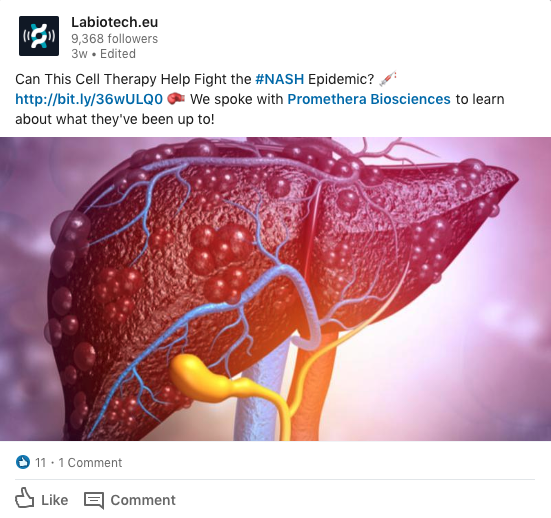
There is so much to be said about social media it could fill several books. But let’s now take a look at what we do at Labiotech Reach to make sure our customers’ projects reach a wide audience.
At Labiotech Reach, we mostly focus on LinkedIn and Twitter. Our social media strategy is carefully mapped out to suit the content we are promoting. Fortunately for us, we have already built a large social media following with over 32K followers on Twitter and more than 9K followers on LinkedIn.
Once a client campaign – be it a brand awareness or lead generation campaign – is published, we start promoting the content via LinkedIn and Twitter. In a few short sentences, we explain what the content is about. Then, we add hashtags and a CTA. This ensures that we target the right audience.
Social media will continue to grow rapidly. In 2020, we can expect an increase in available social media platforms as well as an even greater focus on visuals, including different video styles and virtual and augmented reality. This means that everybody who uses social media to increase their brand’s visibility, trust, and impact will need to keep an eye out for the new social media trends coming in 2020. And adjust.
At Labiotech, we work hard to create compelling digital biotech content and social media is one of our greatest tools. If you want to know more about how we are sustaining the digital transformation and how we reach the right audience, book a call with our team or download our 2020 media kit for more information! We are always happy to share out wisdom.
Images via Hootsuite & We Are Social; Shutterstock.com; Labiotech.eu
Header image by Elena Resko






